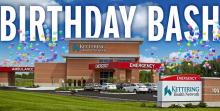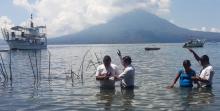Story by Frenita Buddy Fullwood
The Board of Adventist Risk Management, Inc. has named Tim Northrop as the new President, CEO for the company and its affiliated Gencon Insurance companies. Northrop has extensive knowledge in insurance after serving in multiple positions within ARM, most recently as Senior Vice President. He replaces Bob Kyte who retires May 31 to pursue other business opportunities in Idaho.











